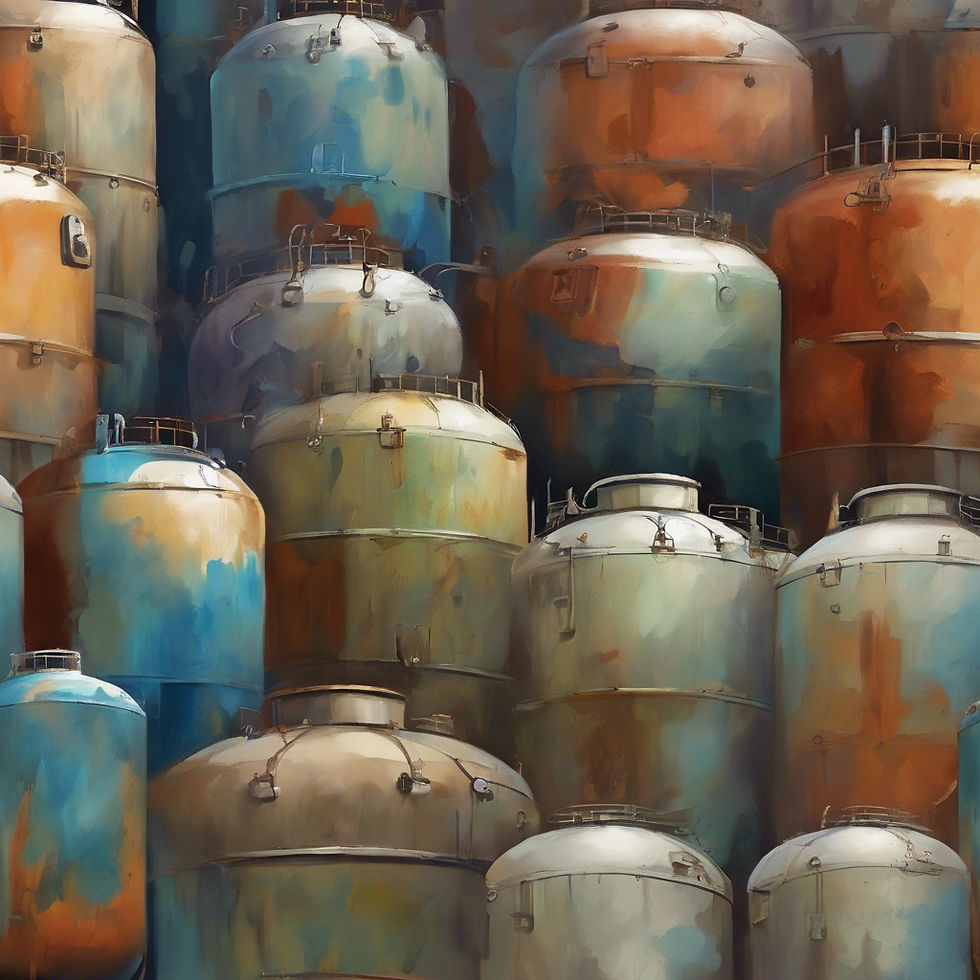How a TEG Dehydration Unit Works
- morgancostigan
- Sep 9, 2023
- 3 min read
How a Triethylene Glycol Dehydration Unit Dehydrates Natural Gas Streams
Natural gas is a vital source of energy, but before it can be transported and used effectively, it must undergo a dehydration process to remove moisture and impurities. One of the key technologies responsible for this transformation is the Triethylene Glycol (TEG) Dehydration Unit. In this blog post, we'll take a deep dive into the workings of this essential equipment and discover how it ensures that the natural gas we rely on is dry and ready for consumption.
The Need for Dehydration
Natural gas, as it emerges from underground reservoirs, is often saturated with water vapor. This moisture content must be reduced to meet pipeline specifications and prevent corrosion and hydrate formation, which can damage equipment and impede the flow of gas. That's where the TEG Dehydration Unit comes into play.
Key Components of a TEG Dehydration Unit
Before we explore the dehydration process, let's familiarize ourselves with the crucial components of a TEG Dehydration Unit:
Inlet Separator: The gas stream enters the unit, and any entrained liquids and solids are separated and removed in this section.
Contactor Tower: This tall vertical column is the heart of the TEG unit. It contains a series of trays or packing material designed to maximize the contact between the moist gas and the TEG solution.
TEG Solution: Triethylene glycol, a hygroscopic (water-attracting) liquid, is used to absorb the water vapor from the incoming gas. This solution is continuously circulated through the contactor tower.
Regeneration System: After absorbing moisture, the TEG solution becomes rich in water vapor. It is then sent to a regeneration system, typically consisting of a reboiler and a still column, to remove the absorbed water and rejuvenate the TEG for reuse.
Gas Outlet: The dehydrated natural gas exits the unit, ready for transport and consumption.
The Dehydration Process
Now, let's explore how a TEG Dehydration Unit works:
Gas Inlet: The wet natural gas enters the unit and passes through the inlet separator, where any entrained liquids and solids are separated and removed.
Contact with TEG: The gas then enters the contactor tower, where it ascends through a series of trays or packing material. Simultaneously, the TEG solution is circulated downward over the trays or packing. This counter-current flow maximizes contact between the gas and the TEG.
Moisture Absorption: As the gas rises through the contactor tower, the TEG solution absorbs the moisture (water vapor) from the gas. This process reduces the moisture content of the gas to meet pipeline specifications.
Rich TEG Collection: The TEG solution, now rich in water vapor, collects at the bottom of the contactor tower and is sent to the regeneration system for processing.
Regeneration: In the regeneration system, the TEG solution is heated in the reboiler to release the absorbed water vapor. The water vapor is separated from the TEG and vented, while the regenerated TEG is recirculated back to the contactor tower to continue the dehydration process.
Dry Gas Outlet: The dehydrated natural gas exits the TEG Dehydration Unit through the gas outlet, ready for transportation and use.
Ensuring Dry and Reliable Natural Gas
Triethylene Glycol Dehydration Units are essential in the natural gas industry, ensuring that the gas delivered to homes, industries, and power plants is free of moisture and impurities. By harnessing the hygroscopic properties of TEG, these units play a crucial role in preserving the integrity of pipelines, preventing corrosion, and ensuring a steady supply of clean and dry natural gas to meet our energy needs.




Comments